PICTURE: MARRIED QUARTERS IN INDIA, 1930S
The photograph below, printed on a postcard mount, shows women, children and dogs outside some married quarters in India. It probably dates from the 1930s, and the married quarters are possibly in Abbottabad cantonment or Murree, both now in Pakistan.
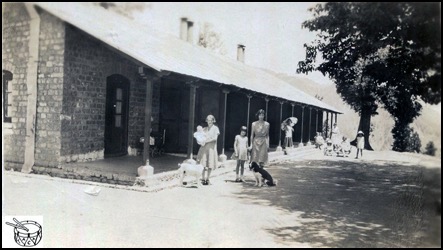
MARRIED QUARTERS WITH A MOUNTAIN VIEW, LOCATION UNKNOWN
‘Snows & married quarters’ says the legend on the front of the black-and-white postcard below, which dates from around a century ago, and houses’ roofs can indeed be seen among the trees. There is nothing further, either on the front or the back of the postcard, to indicate where these married quarters were located. The spectacular mountainous backdrop suggests, however, that it may well have been northern India.

DAGSHAI
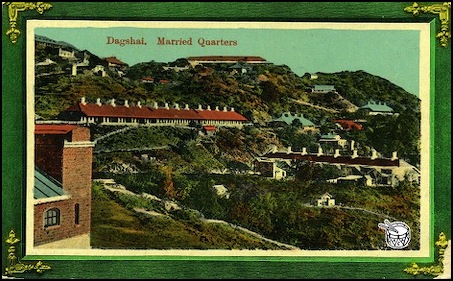
Above: A postcard focusing on the married quarters in Dagshai, a hilly cantonment founded in 1847 in northern India by the East India Company.
Below: A faded black-and-white postcard captioned ‘Married Quarters Dagshai’. Established during the mid-nineteenth century, the hill-station cantonment at Dagshai (today part of the Indian state of Himachal Pradesh) was home to numerous British army families between then and 1947, and included a hospital and jail, shops, churches and schools.
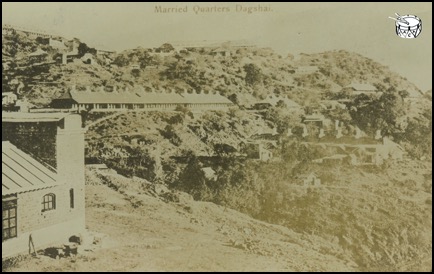
JULLUNDUR
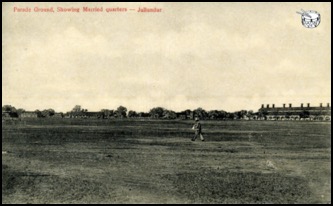
Above: The postcard reproduced above is captioned 'Parade Ground, Showing Married quarters – Jullundur'. Today called Jalandhar, the city of Jullundur is located in the north-west Indian state of Punjab, and the cantonment that was constructed by the British there dates from the mid-nineteenth century.
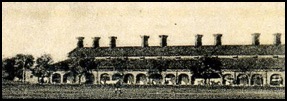
NASIRABAD
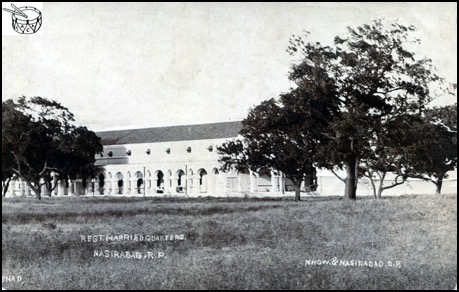
Above: The wording on the front of this undated Raj-era black-and-white photograph informs us that we are looking at the regimental married quarters in Nasirabad, a cantonment in the Ajmer district in the state of Rajasthan, central India, which, as the Imperial Gazetteer of India of 1908 tells us, was then in the ‘Mhow division of the Western Command’. The Imperial Gazetteer also states that ‘Lines exist for a battery of field artillery, a regiment of British infantry, a regiment of Native infantry, and a squadron of Native cavalry’.
PESHAWAR

Above: This colourful image was produced as a postcard and is labelled 'Soldiers' Married Quarters, Peshawar'. It dates from around 1910, when Peshawar was part of British India. Situated at the eastern end of the Khyber Pass, Peshawar is the capital of the North-West Frontier Province, and today belongs to Pakistan.
RANIKHET
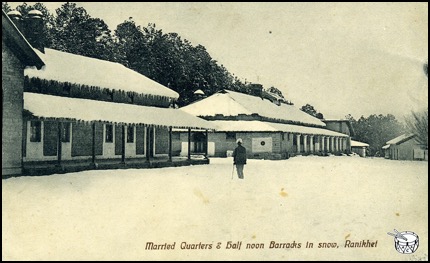
Above: The caption printed on the postcard above reads: 'Married Quarters & Half noon Barracks in snow, Ranikhet'. The British established a cantonment at Ranikhet, an Indian hill station in the Kumaon Hills, in 1869 as a summer retreat for their soldiers. Ranikhet is today situated within the northern Indian state of Uttarakhand (previously, it was part of Uttar Pradesh and, before that, of the United Provinces of Agra and Oudh).
ROORKEE

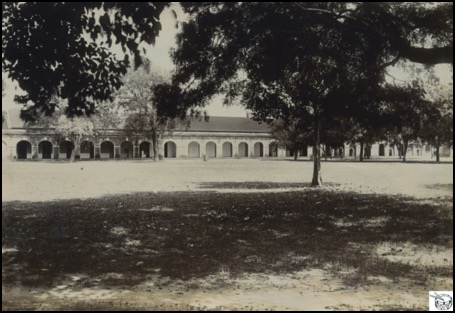
TRIMULGHERRY
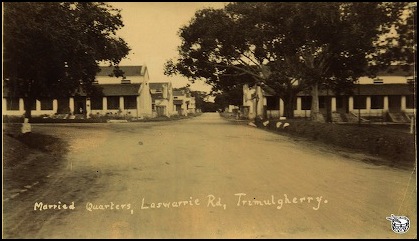
Above: A pre-World War II snapshot of the married quarters in Laswarrie Road, in Trimulgherry, or Tirumalagiri, a suburb of Secunderabad, which is in turn today part of Hyderabad city. Secunderabad, which is situated in the south-eastern Indian state of Andhra Pradesh, was once home to one of the largest concentrations of British troops in India; Trimulgherry was a cantonment area. (To see a photograph of the station hospital, click here.)

